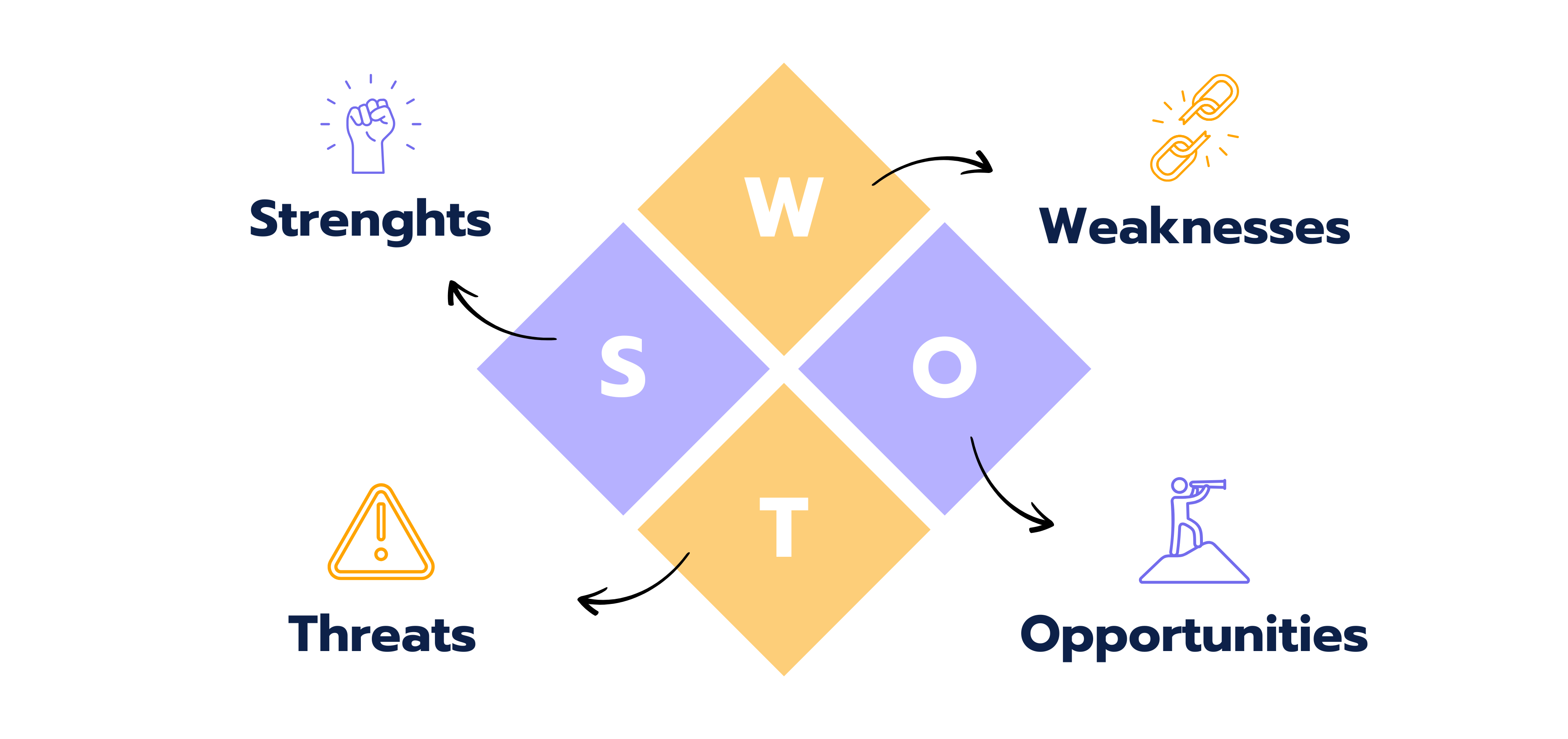As you get to know the different consulting tools, the SWOT analysis is one of the most effective ones. This tool helps assess a company's strategic positioning and reveals whether its strategies align with its objectives. By understanding SWOT, you can gain insights into the factors influencing a company's performance.
What Is the SWOT Analysis?
The SWOT analysis is a strategic tool used to evaluate a company's strengths, weaknesses, opportunities, and threats. This framework helps identify both internal and external factors that affect the company’s success.

Strengths are internal factors that provide the company with a competitive advantage, such as a strong brand or innovative technology. In contrast, weaknesses are internal challenges that may hinder the company's performance, like high costs or limited innovation.
Opportunities refer to external factors that the company can leverage for growth, such as emerging market trends or new technologies. On the other hand, threats are external challenges that could negatively impact the company, such as increased competition or changing regulations.
Let's take a look at the details of each of the four factors in the SWOT analysis and explore some examples.
Strengths: What Sets the Company Apart?
Every company has certain strengths that give it an advantage over others. These strengths help define what makes a business successful and how it can stay ahead of the competition. Let’s look at some key strengths that can make a real difference:
- Brand Image/Goodwill: A company’s reputation is one of its most valuable assets. A strong brand builds trust, which not only attracts new customers but also keeps them coming back. This goodwill can be a deciding factor in a crowded market.
- Financial Resources: A healthy financial position gives a company the flexibility to invest in growth, innovation, and expansion. It also provides a buffer during tough times, allowing the business to continue moving forward when others might struggle.
- Technology: Companies that embrace the latest technology are often more efficient and can offer better products or services. Whether it's improving internal processes or developing innovative solutions, technology plays a key role in staying competitive.
- Know-How: Industry experience and expertise give companies a big advantage. Teams that know the ins and outs of their field can make smarter decisions, spot opportunities early, and navigate challenges more effectively than less experienced competitors.
- Patents and Intellectual Property: Having unique products or protected innovations can be a game-changer. Patents and intellectual property rights not only shield your business from copycats but also give you a clear advantage in the marketplace.
- Customer Base: A loyal customer base is a major asset. Repeat customers bring steady revenue and can act as brand ambassadors, spreading the word about your business. Satisfied customers are also a sign that you're doing something right, which is essential for long-term success.
Weaknesses: Areas for Improvement
Weaknesses are internal factors that may limit a company’s effectiveness. Examples include:
- Poor Reputation: Negative public perception can drive away potential customers.
- High Cost Structure: Inefficient operations may lead to reduced profit margins.
- Lack of Loyalty: Weak customer or employee loyalty can undermine stability.
- Limited R&D: Insufficient innovation can make it difficult to compete.
- Restricted Access: Challenges in reaching key distribution channels can hinder growth.
Opportunities: Where Can the Company Grow?
Opportunities are external factors that a company can leverage to drive future growth. Some examples include:
- New Technologies: New advancements can create new markets or enhance existing products.
- Removing Trade Barriers: Easing regulations can facilitate international expansion.
- Market Expansion: Entering new geographical areas can provide new revenue streams.
- Consumer Trends: Shifting customer preferences may present chances to innovate.
Threats: What Risks Does the Company Face?
Threats are outside factors that could have a negative impact on a company’s growth and profits. Some common threats include:
- Changing Customer Needs: If customer preferences change, products might become outdated.
- Increased Regulations: New laws could bring extra costs or limits on how the business operates.
- New Competitors: Easy market entry can lead to more competition.
- Substitute Products: Alternatives that meet the same needs can take customers away.
Making Sense of the SWOT Matrix
After identifying the factors in each category of your SWOT analysis, the next step is to organize this information into a simple 2x2 matrix.
Once you have your matrix set up, you can formulate strategies by asking key questions. First, consider how you can use your strengths to take advantage of opportunities in the market. Next, think about how you can leverage these strengths to avoid potential threats. Additionally, reflect on which opportunities can help you overcome your weaknesses. Finally, identify ways to minimize your weaknesses to better protect against threats. By systematically addressing these questions, you can develop a clear action plan that aligns with your company’s strategic goals.

